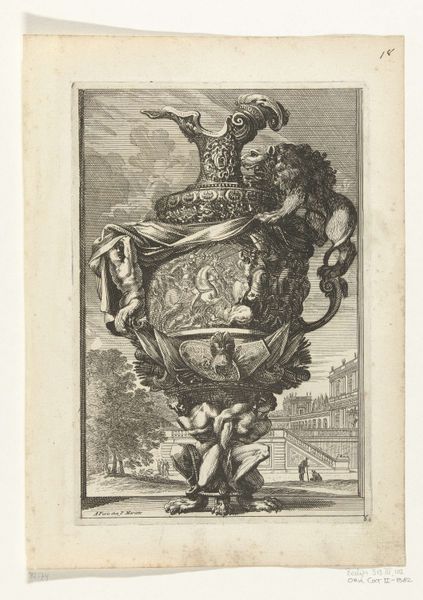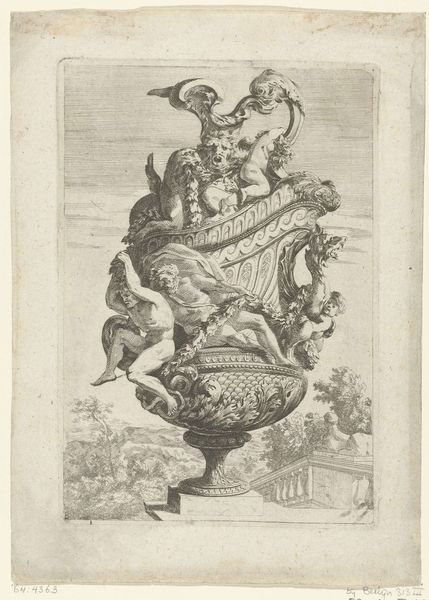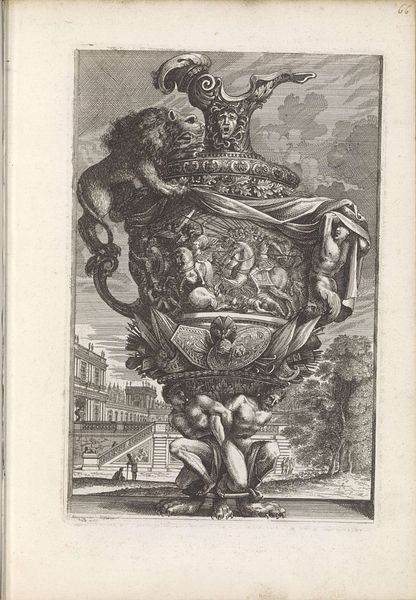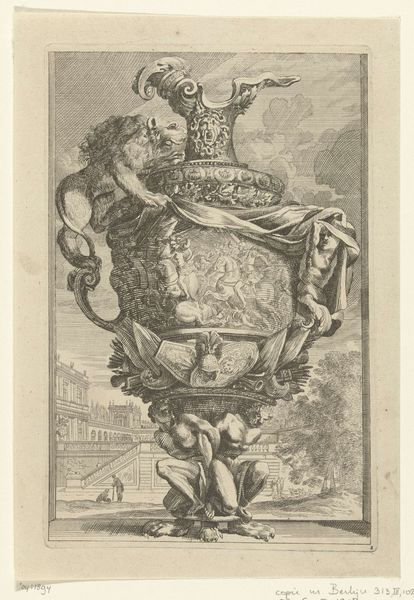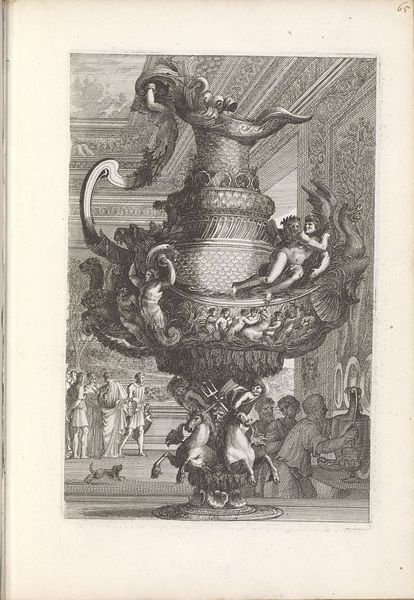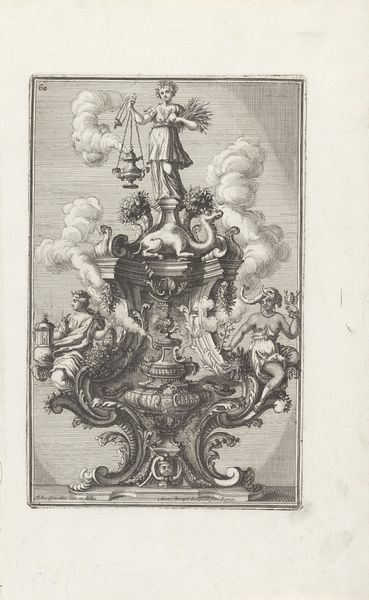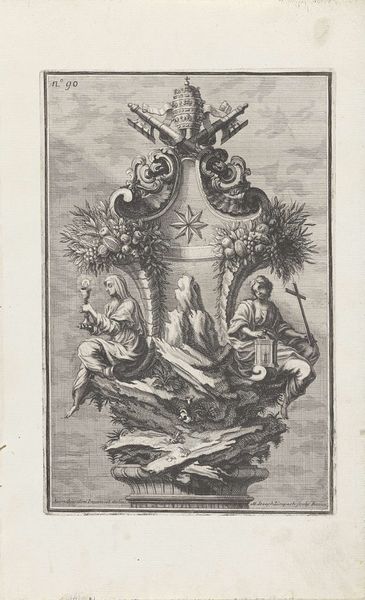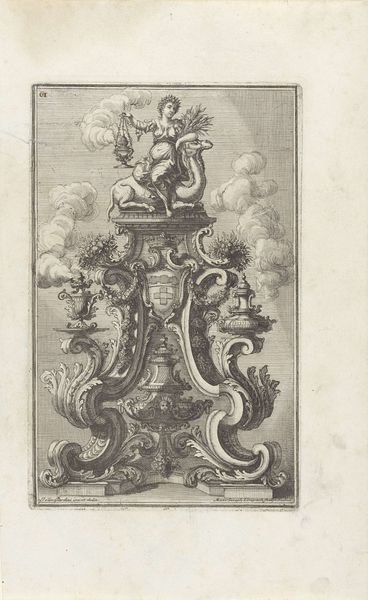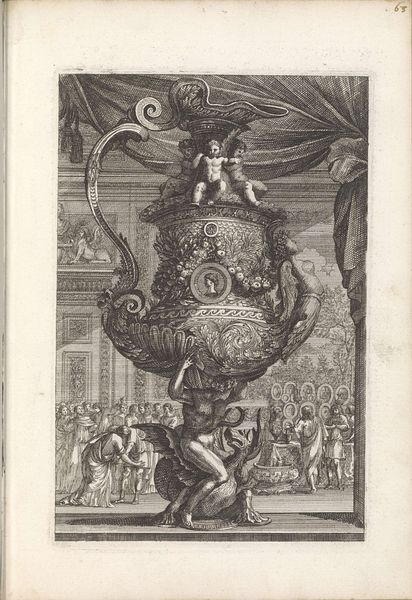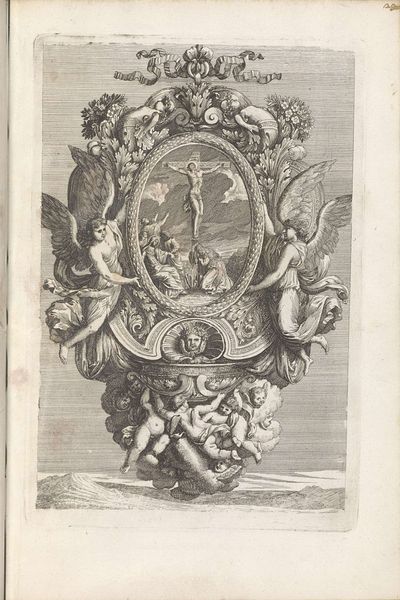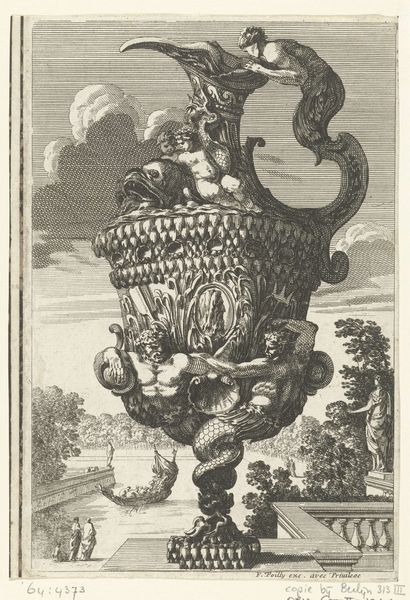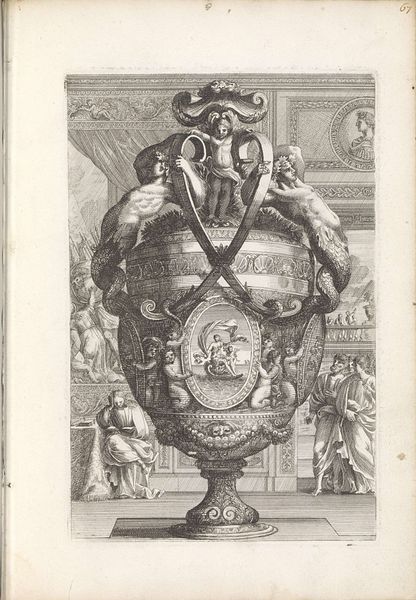
print, metal, engraving
#
allegory
#
baroque
# print
#
metal
#
old engraving style
#
figuration
#
history-painting
#
engraving
Dimensions: height 192 mm, width 129 mm
Copyright: Rijks Museum: Open Domain
This is an engraving of a jug or ewer, made by an anonymous artist. The image is crowded with figures of satyrs and other decorative elements, all suggesting a world of pagan excess. In this period, across Europe, sumptuary laws had attempted to limit the display of wealth amongst the rising merchant classes. Images like this, however, offered an escapist vision of luxury, and the kind of aristocratic display that the new bourgeoisie often envied. These jugs would have been produced by skilled artisans working within a guild system, which controlled training and production standards. Engravings such as this circulated widely, and helped to disseminate visual ideas and patterns. To fully understand the cultural history behind this object, we might consult guild records, merchants' inventories, and sumptuary laws from the time. By connecting the image to its historical context, we can better understand its role in shaping social attitudes towards luxury, class, and artistic production.
Comments
No comments
Be the first to comment and join the conversation on the ultimate creative platform.
